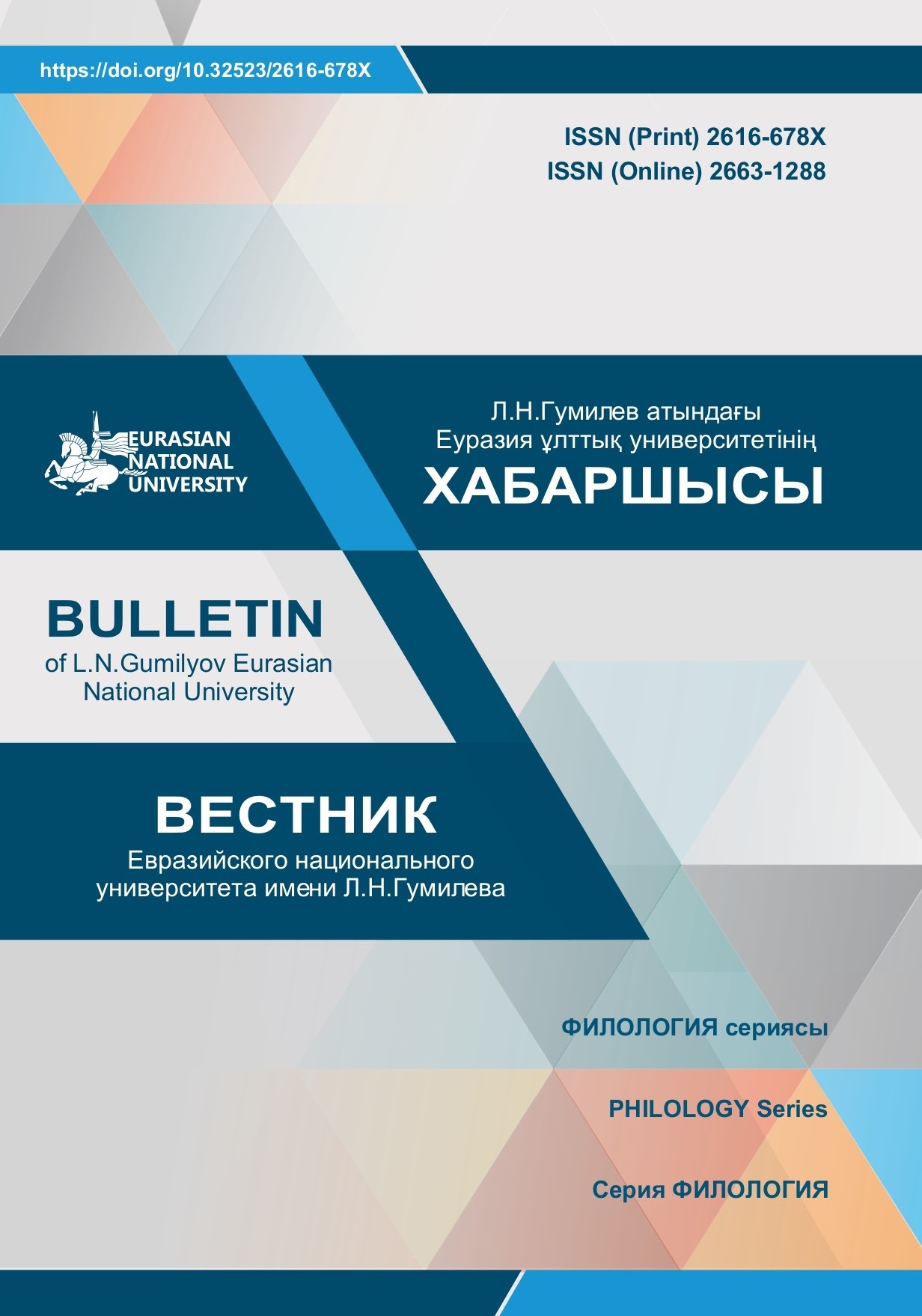The artistic world of Seitkhan Abylkasymuly (based on the story «The Last Chick of the Eagle»)
Views: 248 / PDF downloads: 238
DOI:
https://doi.org/10.32523/2616-678X-2022-141-4-176-183Keywords:
Falconer, poultry farmer, ethnographic work, landscape, artistic time, space, characterAbstract
The article considers the prose works of Seitkhan Abylkasymuly, in particular, an ethnographic
story in the context of an integral artistic and aesthetic category. It is given a scientific assessment of creative
knowledge, worldview, research of a famous writer who actively participated in the literary process. The writer’s
works illustrate folk traditions, national consciousness, way of thinking, and national flavor. This work examines
the complete reflection of the customs of the Kazakh people in the context of traditions and national identity. In
the art world of the writer, there are revealed such concepts as «Falconer», «Poultry farmer», «Eagler» through a
detailed analysis of the national character and artistic originality of the Kazakh environment. The author makes
a lot of efforts to reveal the national identity of the Kazakh people. The work considers how natural phenomena
are described, what role the landscape plays in a work of art, and how the relationship between humans and
nature is reflected in writer Seitkhan Abylkasymuly’s short story. The writer’s spiritual space does not make a
biased decision in the orientation of some events of the historical period; but describes the right and wrong of
life events; involving all the realities of that time. The writer does not fall prey to the temptations of historical
time and space in making artistic decisions. After all, S. Abylkasymuly’s creative instincts, aspirations for nature,
and epic features in the art world are characterized by their relevance to the whole human being. It turned out
that the characters portrayed by the writer, the behavior of the time, the Kazakh environment, as well as the
artistic moment and space of that time, reveal to today’s readers not only the events of the past but also the
problems of the present.







